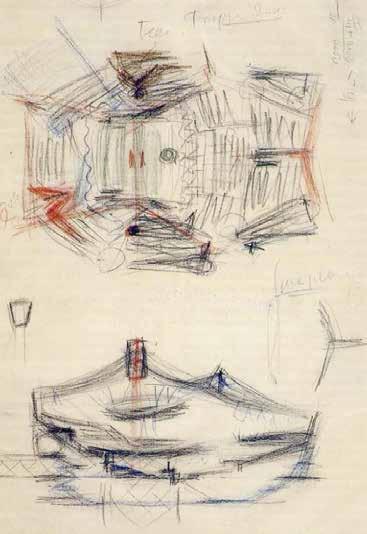
2 minute read
MSD in Robotics and Autonomous Systems
from Pressing Matters 11
Director: Robert Stuart-Smith
The Master of Science in Design: Robotics and Autonomous Systems (MSD-RAS) is a one-year, post-professional degree program. The MSD-RAS is a relatively new addition to the Department of Architecture’s MSD programs, with the exceptional projects presented here already leading to exciting career opportunities for our second year of graduates! The MSD-RAS aims to develop novel approaches to the design, manufacture, use, and life-cycle of architecture through creative engagement with robotics, material systems, and design-computation. The program has launched in a period where the building industry is adopting robotic approaches to prefabrication and on-site construction at an accelerating rate. Industry is motivated by the opportunities these technologies afford in improving abysmal productivity and quality levels compared to other manufacturing sectors, while reducing the time, cost, and safety hazards of building work, also addressing a skilled-labor shortage in construction workers. These greater levels of automation are also creeping into architectural software and practice, challenging established means of design production, while offering opportunities for us to think differently about the way we conceive, develop, and materialize architecture. The MSDRAS aims to address this shifting and increasingly automated approach to architecture and construction through a fusion of creative, practical, and speculative means of design that aim to expand the agency of architecture and the architect to develop innovative and alternative means of engagement with the world at large.
The degree fosters integrative design thinking, allowing students to gain skills in advanced forms of robotic fabrication, simulation, and articial intelligence, to develop methods for design that harness production or live adaption as a creative opportunity. Going beyond automation, the MSD-RAS explores how varying degrees of autonomy can offer sensitive, situated, and adaptive relations between design, production, and our experience of the built environment, that enable designers to re-think social, environmental, and ethical considerations not only within design outcomes, but also in the conception and making of architecture. The MSD-RAS runs over two semesters. In the Fall semester students participate in two halfsemester design studios each supported by a technology course (in algorithmic design and cyber-physical systems), a theory course taught by MOMA-curator Evangelos Kotsioris, and an elective within either the design or engineering school. In Spring, students focus on the production of a single project developed within semester-length courses including a design studio, industrialization, materials and tooling course, advanced RAS programming (coding for AR/VR and real-time robotics), and a course in scientic research and writing. Throughout both semesters, design is explored primarily through the hands-on production of experimental robotically fabricated prototypes, and the synthesis of knowledge gained in theoretical and technical courses. This year, three of the four Springsemester project teams opted to submit research papers to world-leading conferences, with two accepted for publication in ACADIA 2022 and the third for SiGRADI 2023. These publications demonstrate that MSD-RAS student projects are competitive with world-leading research undertaken by fulltime faculty and PhD students, yet these projects were undertaken in a single spring semester! We are excited to see the diverse, technically challenging, and ambitious researchled-design projects our students have achieved being shared

HANS SCHAROUN, NEUES BAUEN, AND THE CHINESE WERKBUND: THE SEARCH FOR POSTPERSPECTIVAL SPACE
Liyang Ding
The dissertation investigates the role that Chinese architecture, urbanism, and cultural history played in shaping Hans Scharoun’s design thinking and postwar practice. Inuenced by Hugo Häring’s organic building agenda and profound interest in East Asian architecture, Scharoun engaged in the mid-1930s with the Chinese architectural tradition. From October 1941 to May 1942, Scharoun participated in an organization called the Chinese Werkbund initiated by Häring. Thanks to these meetings, and notwithstanding never having visited China, Scharoun developed his unique understanding of organic buildings as well as strikingly original urbanist ideas and spatial concepts including Stadtlandschaft, “a-perspectival” space, and Raum der Mitte. All these concepts borrowed and adapted Chinese architecture and town-planning principles.

This research argues that Scharoun’s turn toward Chinese precedents—wholly removed from European examples tainted by the National Socialist distortions of the tradition—provided him with an opportunity to rethink the fundamentals of architectural and urban order.




